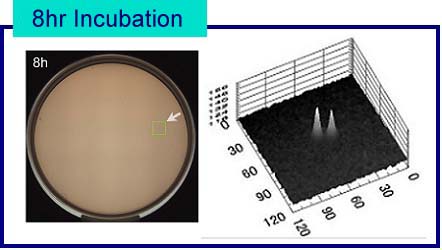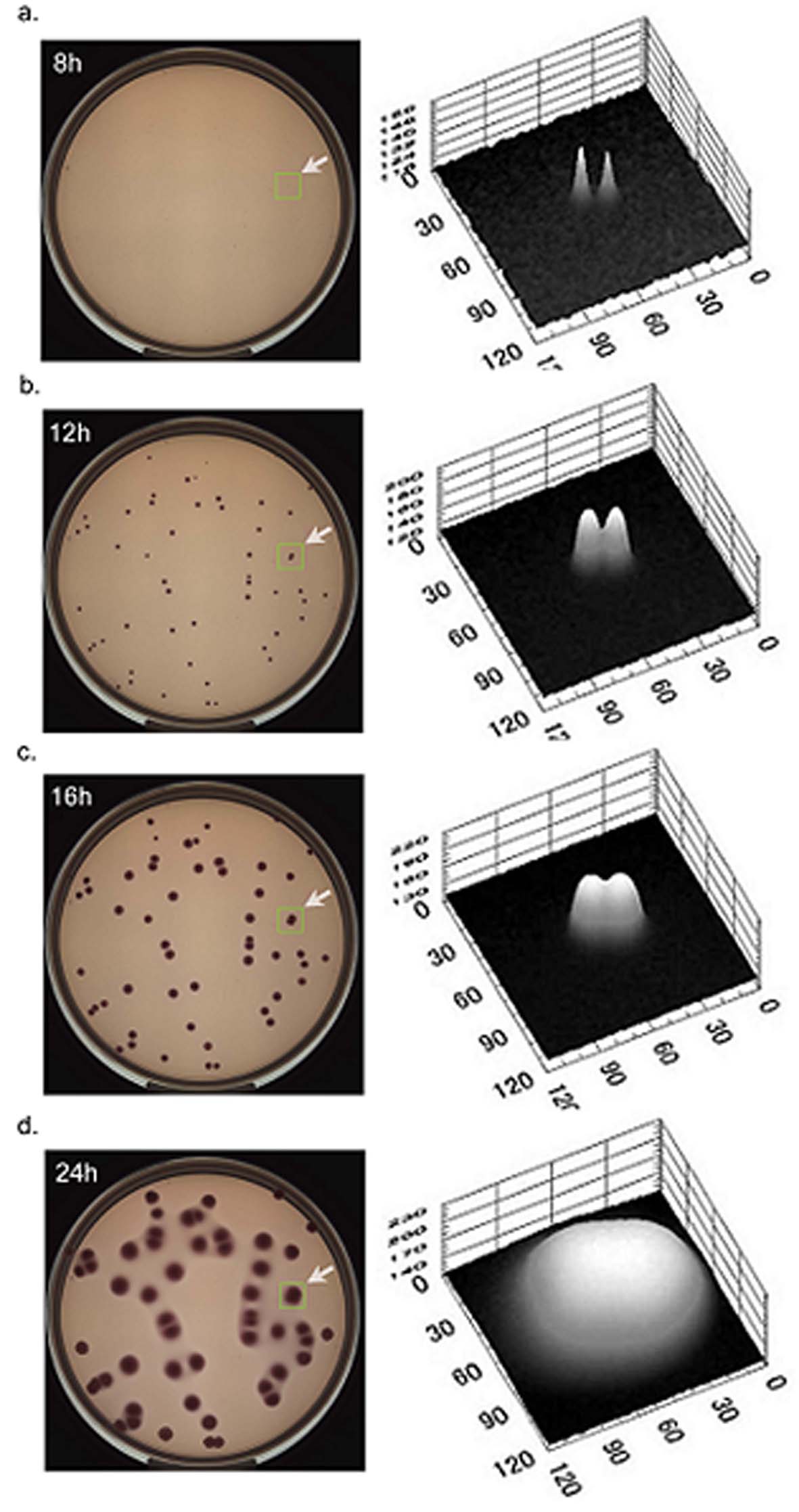Exact number can be used for colony count instead of CFU !



Set plates and start a test !
Figure a. shows the condition when colonies were detected by MicroBio µ3D at 8h. The colonies pointed out by white arrow on the agar plate are hardly visible to the eye. But the 3D shadow images of two colonies are clearly recognizable by MicroBio µ3D and recorded as two colonies..

Figure d. shows the condition when incubation of the agar plate proceeded to 24h. At this timing, two colonies overlapped together, forming single large colony that is pointed out by white arrow. If the plate were visually inspected after 24h incubation, colony count would be treated as 1cfu. However, two is the correct count as the chronological 3D shadow graphs show.
Related Page
- [Wide Colony Count Range]
Range of automated colony count is from 1 to about 10 thousand. - MicroBio µ3D has a wide count range and counts from 1 colony to closer to 10 thousands.
- [Colony Count Graph]
When two species are detected in a test sample, the colony count becomes staircase. - When two species are detected in a test sample, the colony detection and count graph of MicroBio µ3D becomes staircase.
- [Rapid Detection and Count]
They are the results that show how MicroBio µ3D system detect and counts micro-colonies rapidly and automatically. - These are the performance results of automated rapid detection and count of MicroBio µ3D on E. coli, Aspergillus brasiliensis and Candida albicans. Detection is in real time.
- [Invisible colonies detected]
Colonies under a piece of hamburger is detected. - MicroBio µ3D detects invisible colonies under a piece ot hamburger. The colonies become visible after a prolonged incubation, coming out from the rim of a meat piece.
- [Pricise Colony Count]
There are 4 colonies detected among a few hundred of hamburger fragments. - There are 4 E. coli colonies detected and counted precisely among a few hundred hamburger fragments in a poured cliform detection agar plate.
